Action Alerts: 
Magnusun Series is proud to present the Earth Day Run. Come run and walk one of our many race distances and at the same time you can feel good about supporting the environment. This event takes action both locally and globally. CLICK HERE
Update from the Mangrove Action and Australian Shorelines CLICK HERE
An Interview with Honduran Environmentalist and Goldman Award Winner EN ESPANOL WE NEED HELP! – Stop Bombing Indonesia’s Mentawai Reefs!
VIEW THE VIDEO THEN
SIGN THE PETITION
URGENT ALERT! Mangrove International Action Needed for Reversing Brazil's Forest Code READ MORE AND VIEW SAMPLE LETTER Mangrove Restoration in Asia – Watch Short Video 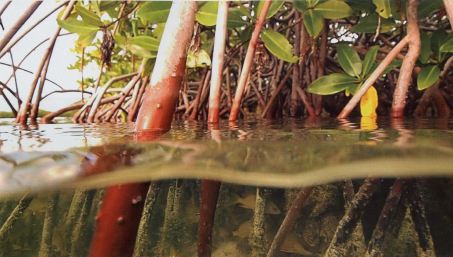
READ A MOSAIC OF LIFE” Peek into the underwater world of mangroves, "womb of the sea." By Liz Cunningham Photos By Wes Matweyew and Liz Cunningham CALLING FOR MANGROVE ART SUBMISSIONS! We invite all primary school children from tropical and sub-tropical nations, and whose schools are located near mangroves, to create art telling us "why mangroves are important to me and my community". Selected winners will be published in a 2014 calendar to be distributed internationally to raise awareness of mangrove forest ecology. Email
monicagquarto@olympus.net or mangroveap@olympus.net Phulbari Coal Mine Blog – View Blog
Phulbari Update – NEW Watch Short Video MAP's 2014 Children's Mangrove Art Calendar sponsors needed. View PDF Support MAP Through Art Support MAP through Art!
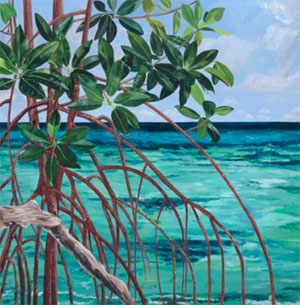
Enma Saiz has released only 50 signed reproductions. Read More Donate to MAP via Paypal
Giving could never be easier Green Planet Fundraising Assists MAP – LEARN MORE
URGENT – VOLUNTEERS NEEDED! JOIN MAP! Immediate Internship Opportunity – Consumer awareness campaign at an international environmental NGO – SEATTLE AREA – READ MORE MAP is looking for volunteer interns for its Thailand Headquarters – READ MORE MAP’s VOLUNTEER INTERNS HELP MAP MAKE A BIG DIFFERENCE
READ MORE
MANGROVE ISSUES MANGROVE BOOK – J. Primavera
The book Beach Forests and Mangrove Associates in the Philippines by J.H. Pimavera and R.B. Sadaba (ISBN 978-971-9931-01-0; National Library CIP QK938.C6 581.75109599 2012 P220120602) is now available. aves, flowers, fruits, utilization and silviculture.
SEE POSTER and order instructions View MAP’s uploaded Videos at MAPmangrover’sChannel “Education In The Mangroves" can now be seen on the PhotoPhilanthropy website here! Marvellous Mangroves – A Curriculum-Based Teachers Guide.
By Martin A. Keeley, Education Director, Mangrove Action Project
Read this 10 page history of the development of MAP’s educational curriculum VIEW DOCUMENT FOR MORE ON MAPs AWARD WINNING CHINA MANGROVE CURRICULUM VISIT THESE SIGHTS
SLIDE SHOW VIMEO SHOW Education In The Mangroves
Six minute video features discussion of Mangrove Action Project’s Mangrove Curriculum VIEW THE VIDEO
Article in Canada's Green Teacher Magazine – Read More
"Question Your Shrimp" Campaign Learn more about the affects of the shrimp industry on mangroves by visiting our blog Editor’s Note: Mangrove Action Project’s Executive Director, Alfredo Quarto was interviewed about shrimp by Green Acre Radio’s Martha Baskin LISTEN TO INTERVIEW
Join MAP on Facebook
Sign the Consumer's Pledge to avoid imported shrimp

Not yet a MAP News subscriber?
Click here to subscribe.
Note to Our Readers:
We strive to keep active links in our newsletter. However, due to circumstances beyond our control, occasionally links to stories may become broken. If you find a link to a story is not functioning, please cut and paste the headline into your browser search bar. In most cases you should be able to locate the original story.

Help Mangrove Action Project through your recycled E-Waste. List of Accepted E-waste Items: Injet Cartidges, Cell Phones, Pagers, GPS, Radar Detectors, Mobile Hot Spots, Calculators, eBook Readers, iPods/MP3 players, Digital/Video Cameras/Camcorders, PDAs, iPads/Tablets/Laptops, Video Game Consoles, Handheld Video Games Visit the Mangrove Action Project recycle website Click on the recycle button then click on the Download Shipping Label, and follow the instructions.  | FEATURED STORY Our taste for prawns is killing the sea

U.K. – British supermarkets are selling prawns reared using a technique that is destroying vast swathes of the ocean’s ecosystem, according to an investigation by the celebrity cook Hugh Fearnley-Whittingstall. Tesco, Morrisons and the Co-op have admitted buying prawns from a company owned by a Thai billionaire that feeds the shellfish with “trash fish” — sea creatures that cannot be sold at market. Catching trash fish involves the use of fine nets that scoop up all the sea life in a given area, including crabs, stingrays, turtles, shark species and young fish. The entire haul is then ground up and incinerated in a series of hot ovens until it turns into a powder that is fed to prawns kept in giant farms. The indiscriminate technique means many fish are prevented from growing to full size and the sea life in whole sections of ocean is destroyed. READ MORE
ASIA
Sundarbans: Nature's bioshield
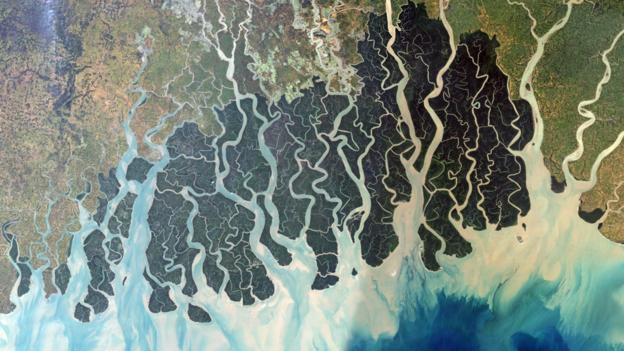
BANGLADESH – Stretching along the coastline of India and Bangladesh, this complex maze of mangrove trees and waterways mark the area where land meets the sea and freshwater meets seawater. Wildllife thrive in this unique and delicately balanced ecosystem and it is home to large numbers of mammals, birds and fish. It is also one of the largest haunts of the endangered Royal Bengal tiger. But the Sundarbans value extends beyond just providing a habitat for these magnificent animals; it also protects the densely populated Bay of Bengal from cyclones and the worst extremes of nature. Yet, it is now threatened by man’s activities, including land reclamation, logging and shrimp farming. In fact, this vast tract of mud and tangles of roots is now being destroyed faster than almost any other ecosystem on Earth, removing this essential barrier and the rich habitat. This short film reveals the wildlife this strange and magical forest supports and explores the hidden strengths that make it such an effective coastal defence. VIEW 4 MINUTE VIDEO
Yet another environmental crusader slain
THAILAND – Yet another self-made environmental protection activist has fallen – this time at the hand of a gunman believed to have been hired by local businessmen and politicians involved in the dumping of toxic industrial waste in Chachoengsao province. The victim, 43-year old Prajob Nao-opas, was village headman of moo 14, tambon Nong Haen, Phanom Sarakham district. He was murdered in broad daylight on Monday by a gunman at an automobile garage on the Phanom Sarakham-Ban Sang road as he was waiting for mechanics to complete repairs to his pickup truck. Witnesses told police the gunman and another man arrived at the garage in a black Honda Accord. Both of them approached Prajob and one of them fired four shots from an 11mm semi-automatic pistol at the headman, who died shortly after he was rushed to the district hospital. The two killers escaped in their car. READ MORE
Eco club Student’s Success in International Children’s Mangrove Art Contest
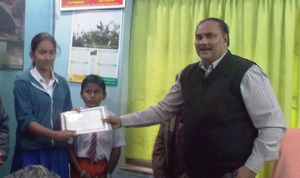
INDIA – Ananya Atmaja Mohapatra, a 14 year old 10th grade student at MN High School, in Pattamundai, Odisha, India has placed 1st position for India in the International Children’s Mangrove Art contest 2013 conducted by USA based organization Mangrove Action Project (MAP). In addition, Sri Nirakar Lenka, age 12 of Shivananda Vidya Mandir, Rajnagar school, and 13 year-old Sri Om Prakash of Panda Kundupur U.P. School, Kundapur placed second and third respectively. On behalf of MAP, we the Action for Protection Of Wild Animals (APOWA) conducted this art contest in 19 coastal schools of Kendrapara district. This event has enhanced awareness level not only amongst the students, but also the members of their families on the important role that mangrove forests play in the lives of the coastal communities in particular and for coastal life in general. READ MORE
Fishermen blockade Trang port
THAILAND – Angry fishermen in around 80 longtail boats blocked the entry to a port in Trang province on Monday in protest at the actions of fisheries patrol boats, which have been destroying or removing illegal fishing nets, according to a report in Thai Rath. The government's Department of Fisheries has assigned patrol boats, known as Green Leaf Boats, to stop local fishermen using drift nets – nets which float freely on the surface of the water. These nets are illegal because they frequently entangle non-targeted marine life, often endangered species, not just commercial fish. The protesting fishermen said the Green Leaf Boats last week removed 300 drift nets in Trang's Kantang district and cost them more than 300,000 baht. The protesters said their income had fallen as a consequence and urged the patrol boats to stop interfering with their efforts to earn a living. READ MORE
Dark days ahead for shrimp supply as EMS ravages Asia
THAILAND – Early mortality syndrome, better known as EMS — or Acute Hepatopancreatic Necrosis Syndrome, (AHPNS) as scientist refer to it — has reportedly reached disastrous levels in eastern Thailand. “Thailand’s production for 2013 is expected to be anywhere between 25 to 35 percent less than 2012,” Jim Gulkin, managing director of Siam Canadian told IntraFish. “That is very significant.” The drop in Thai shrimp exports to the United States in 2012 is expected to represent the lowest volume sold in nearly 10 years. “Production problems in shrimp are occurring in China, Vietnam, Thailand and Indonesia due to diseases,” Gulkin said. “The worrying factor of EMS is that up until now, neither the origins nor the causes of the disease are known and therefore there is no known remedy at this time.” READ MORE
What Asia's shrimp crisis means for the US

Thailand makes up $1.2 billion (€901 million) of the $4.5 billion (€3.4 billion) in shrimp the United States imports, according to data from the National Marine Fisheries Service (NMFS), so any hits the industry takes directly affects the US market. In the past year, the industry has been hit by disease, possible countervailing duties and the rise of Ecuadorian production, so 2013 is sure to be a tough one for shrimp prices in the United States, Jim Gulkin, managing director at Siam Canadian, told IntraFish. He predicts Thai shrimp production will be down 40 to 50 percent during the first half of 2013. If the country has a good recovery — and he stressed that's a big if — and makes up some ground in the last six months, the whole year will still be down 25 to 35 percent in production. READ MORE
China criticizes US investigations into shrimp
CHINA – On Wednesday, China’s Ministry of Commerce criticized US investigations into Chinese shrimp exports, saying the investigation is a violation of WTO rules. A ministry spokesman said US is classifying China as a non-market economy, and there is no good evidence to justify the investigation. The U.S. Coalition of Gulf Shrimp Industries alleged that producers and exporters in China, Ecuador, India, Indonesia, Malaysia, Thailand and Vietnam have received financial assistance from their governments. The US International Trade Commission has launched investigations to determine whether this is true and what duties should be imposed in response. Chinese exporter Guolian Aquatic has engaged a panel of lawyers to challenge the investigations. READ MORE
Malaysia's tsunami buffer zone takes shape

MALAYSIA – The 2004 Sumatra-Andaman earthquake unleashed the deadliest tsunami in history and its catastrophic effects were felt by 14 nations, including Malaysia. The tsunami, which was the result of a 9.1-9.3 Mw earthquake, destroyed the coastlines of Sumatra in Indonesia, Tamil Nadu in India, Sri Lanka, Thailand, and Somalia in Africa. More than a quarter of a million people lost their lives and many coastal townships were decimated. People learnt a number of lessons from this tragedy. They learnt that some of the shorelines in several countries were facing open seas. Therefore, these countries decided to enclose their shores in the most innovative way. They created buffer zones comprising mangrove forests. Malaysia reacted quickly by rolling out mangrove planting programmes with the help of the Ministry of Natural Resources and Environment on 14 April 2005. READ MORE Myanmar resumes export to US after sanctions
MYANMAR – Myanmar resumes export to the U.S following the easing and lifting of international sanctions, Myanmar Fishery Federation (MFF) said. One of the Myanmar fishery companies, Ocean Harvest (Myanmar) Limited has exported 17 tonnes of frozen saltwater shrimp to Red Chamber Company located in Los Angles, California. "We used to export fish and fishery products to the U.S before the sanctions. This export is the first time after the sanction was lifted," managing director Myat Aung Nyunt of Ocean Harvest. “During the sanction period, we have been exporting our products to Asian countries including Japan and Hong Kong, he said. READ MORE
Gorontalo’s mangrove forests in dire need of protection
INDONESIA – The Tanjung Panjang Nature Reserve in Patuhu village, Rangangan, Pohuwato regency, Gorontalo, is becoming increasingly degraded as almost the entire mangrove conservation area has been converted into an aquaculture area, aimed at fish and shrimp farming. Rahman Dako from Tomini Bay Sustainable Coastal and Livelihood Management (SUSCLAM), an NGO focusing on mangrove conservation and coastal community empowerment, said the opening of fish farms in the Tanjung Panjang Nature Reserve had taken place on a massive scale for a long time. “Of the 3,000 hectares making up the Tanjung Panjang Nature Reserve, only around 600 hectares remain intact, as the remainder have been converted into aquaculture areas,” Rahman said, adding that Tanjung Panjang played an important role as a buffer area and sustainable coastal ecosystem for Tomini Bay. READ MORE EUROPE
Economic imperative for protecting mangrove ecosystems
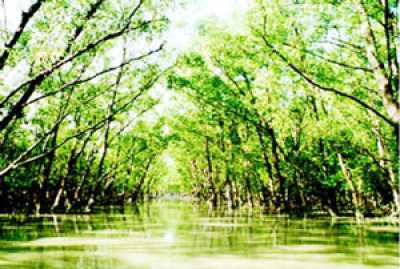
U.N. – Experts are urging policymakers to conserve mangrove forests and recognise their essential services to nature and humanity alike, saying that shrimp farms and development activities leading to their replacement will be a bad economic trade-off both in the short and longer terms. Organisations from the forestry and conservation sector and those linked to the United Nations (UN) have released a policy-brief based on the 2nd edition of the World Atlas of Mangroves (2010). It aims to provide managers with lessons learned in the past mangrove conservation and management efforts along with policy recommendations. Found mostly in the tropics straddling land and sea, mangroves account for less than half the one per cent forests of all kinds worldwide. Taken together, some 70 species of mangroves are found in 123 tropical and sub-tropical nations and territories but they occupy just 152,000 square km in total-an area slightly larger than Nepal. READ MORE
AMERICAS
Volunteers clean up and plant some 200 mangrove seedlings at Little Key

ST. MAARTEN – An energetic group of volunteers cleaned-up Little Key in Simpson Bay Lagoon and then planted Red Mangroves seedling along the shoreline on Saturday together with Environmental Protection in the Caribbean (EPIC), St. Maarten Pride Foundation and The Yacht Club at Isle de Sol staff. This was part of EPIC's Love the Lagoon programme, which brings attention to the need to protect St. Maarten's few remaining wetlands (ponds and lagoons) and the last surviving mangrove stands of the lagoon. Saturday's clean-up and tree planting event was one of a number of activities EPIC and Pride will continue to undertake this month as part of the foundations' World Wetlands Day activities. These activities include school presentations, excursions, clean-ups and tree planting events. READ MORE
Mexico’s Congress seek to amend law on mangroves
MEXICO – The president of the Tourism Commission of the Chamber of Deputies, Rodolfo Dorador announced that the modification of Article 60 in Law TER General Wildlife (LGVS), which protects mangroves in Mexico, at the request of employers, who argue that along with the Mexican Official Standard 059 which reclassified the mangrove category, inhibit the development of tourism and investment. "Let's just get to 60 TER squarely to stop being an impediment and entrepreneurs can build in the mangroves," he said in the context of the meeting between representatives of the country's leading business organizations and members of the committees of Tourism of the House of Representatives and Senators, local legislators and members of the Legislative Council of Tourism (Conletur). During the first day of formal activities XI National Tourism Forum, held in Cancun, the president of the Mexican Resort Development Association (AMDETUR) Romárico Arroyo Marroquin, was referred to the time when the legal framework allowed removing mangroves, offsetting the extent to reforest mangroves elsewhere (via mitigation). READ MORE
READ ORIGINAL EN ESPANOL
Fish mislabeling widespread in U.S.
U.S.A. – The mislabeling of fish is widespread across the U.S., a shocking new study has revealed. Ocean conservation group group Oceana analyzed the DNA of 1,215 seafood samples from 674 retail outlets in 21 states between 2010 and 2012. Their research showed that 33 percent all samples were mislabeled, according to U.S. Food and Drug Administration guidelines. One alarming discovery shows that a huge amount of fish sold as 'white tuna' is actually escolar, a fish that causes uncontrollable, oily, orange diarrhea. The study found mislabeling in 27 of the 46 seafood types tested. It revealed that 59 percent of fish sold as tuna in U.S. restaurants and grocery stores is not actually tuna. Only snapper, mislabeled 87 percent of the time and in reality any one of six different species, was sold fraudulently more often. READ MORE
LAST WORD
Greetings from Action for Protection Of Wild Animals (APOWA) in India!
We would like to thank you for sending the appreciation certificates & calendars for the winning student participants in MAP's International Children’s Art Contest 2013.
In this connection, we have organized a congratulatory meeting and awarded the certificates and calendars. (SEE STORY ABOVE)
Thanks and Kind regards,
Bijaya Kumar Kabi
Director, APOWA
Action for Protection of Wild Animals (APOWA)
At-Hatapatana, PO-Kadaliban, Dist.-Kendrapara
Odisha, Pin-754222, India
Tel.-+916729 225908
E-mail- apowa1999@yahoo.co.in
www.apowa.org.in ~ If you’d like to have the last word on this or any other mangrove related topic, please send us your submission for upcoming newsletters. We’ll choose one per issue to have “the last word”. While we can’t promise to publish everyone’s letter, we do encourage anyone to post comments on our Blog at www. mangroveactionproject.blogspot.com BACK TO TOP
Not yet a subscriber? Click here to subscribe. Please cut and paste these news alerts/ action alerts on to your own lists and contacts. Help us spread the word and further generate letters of concern, as this can make a big difference in helping to halt a wrongdoing or encourage correct action. |











